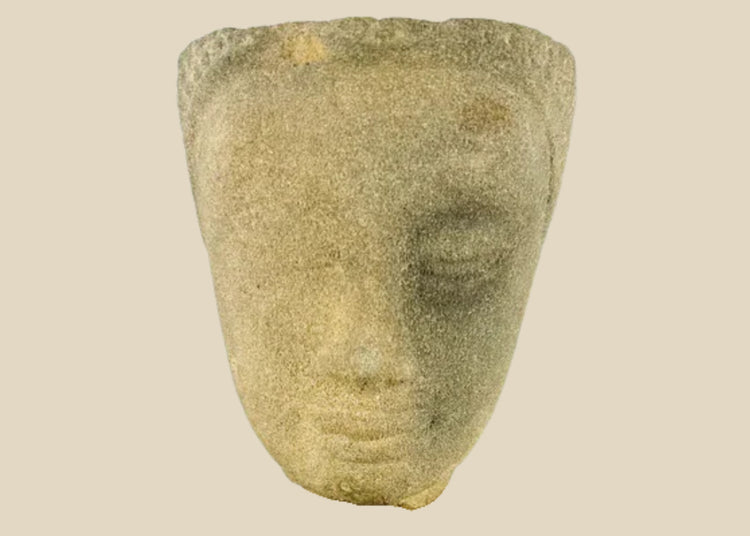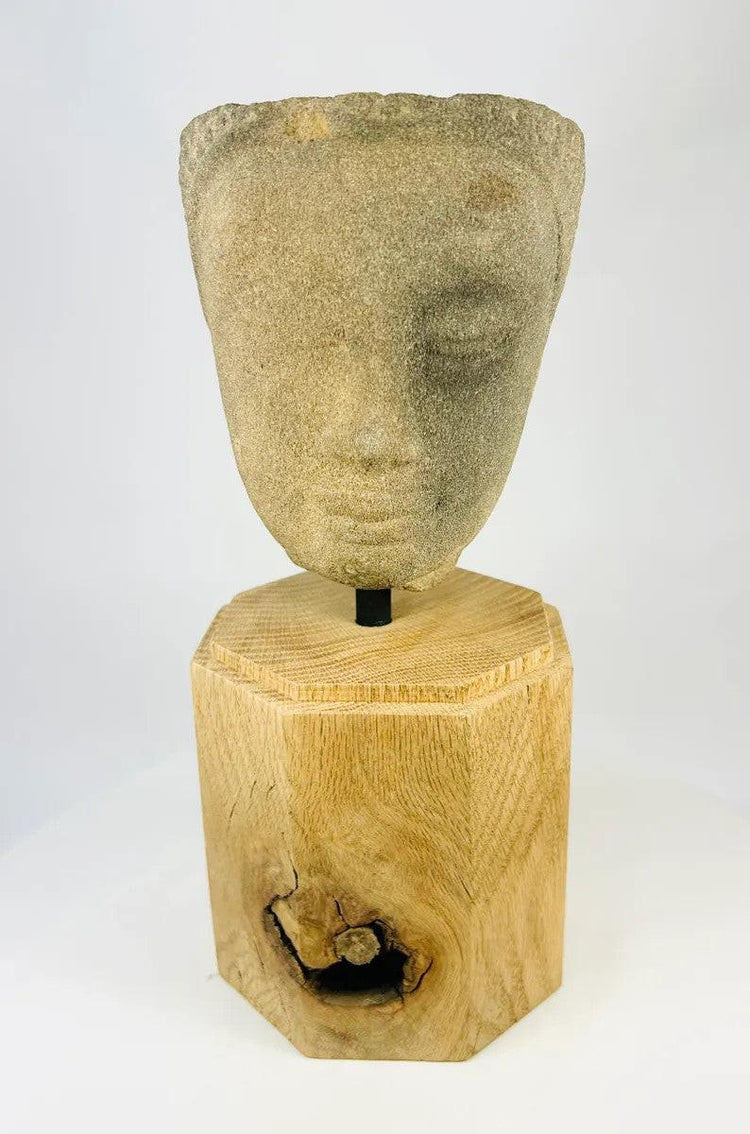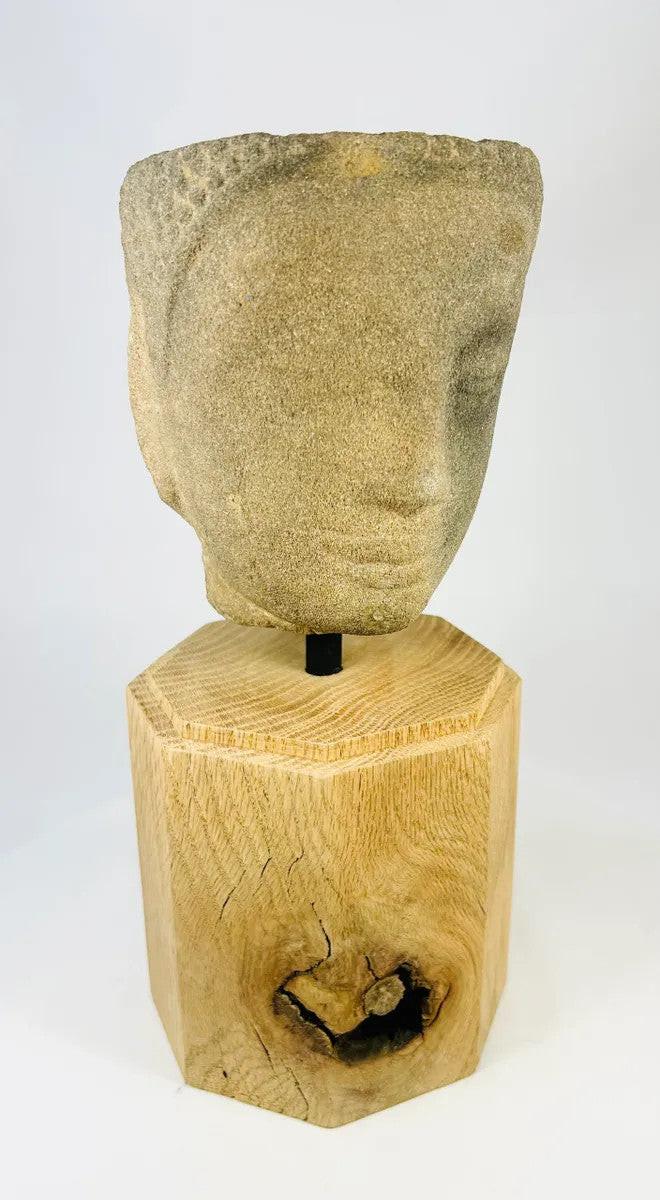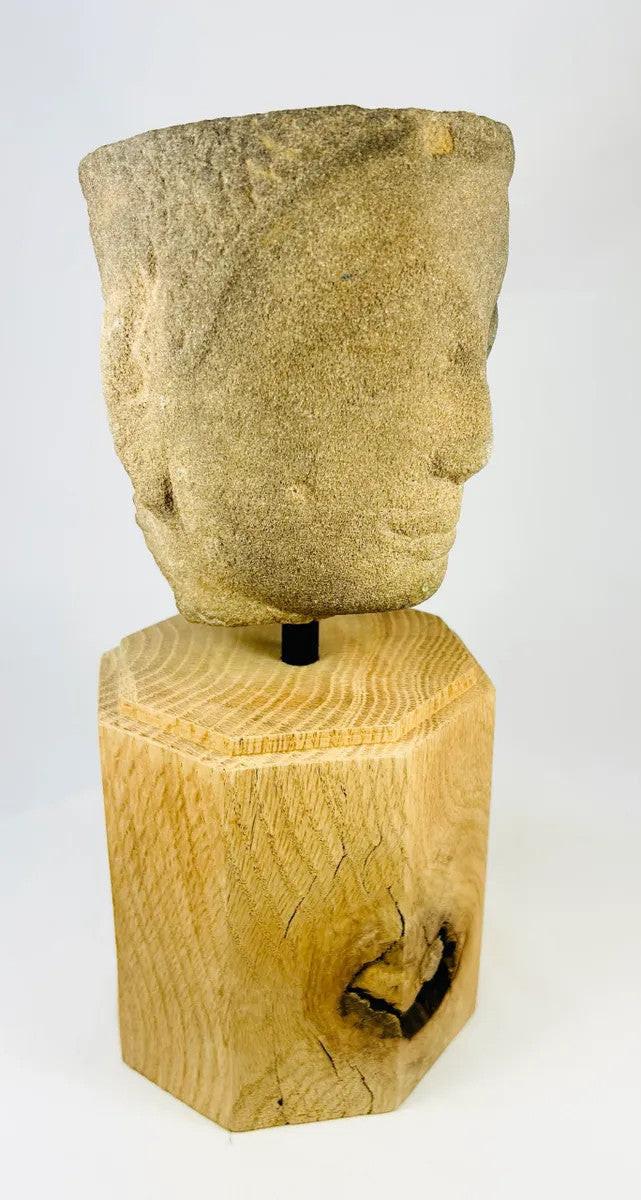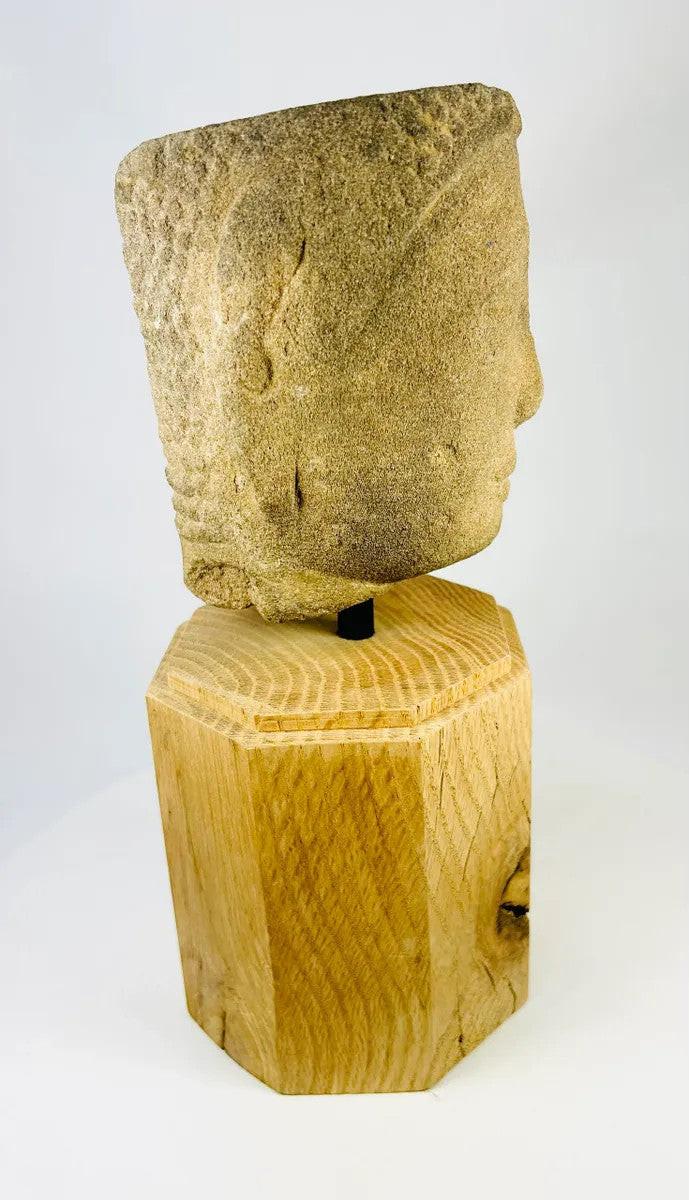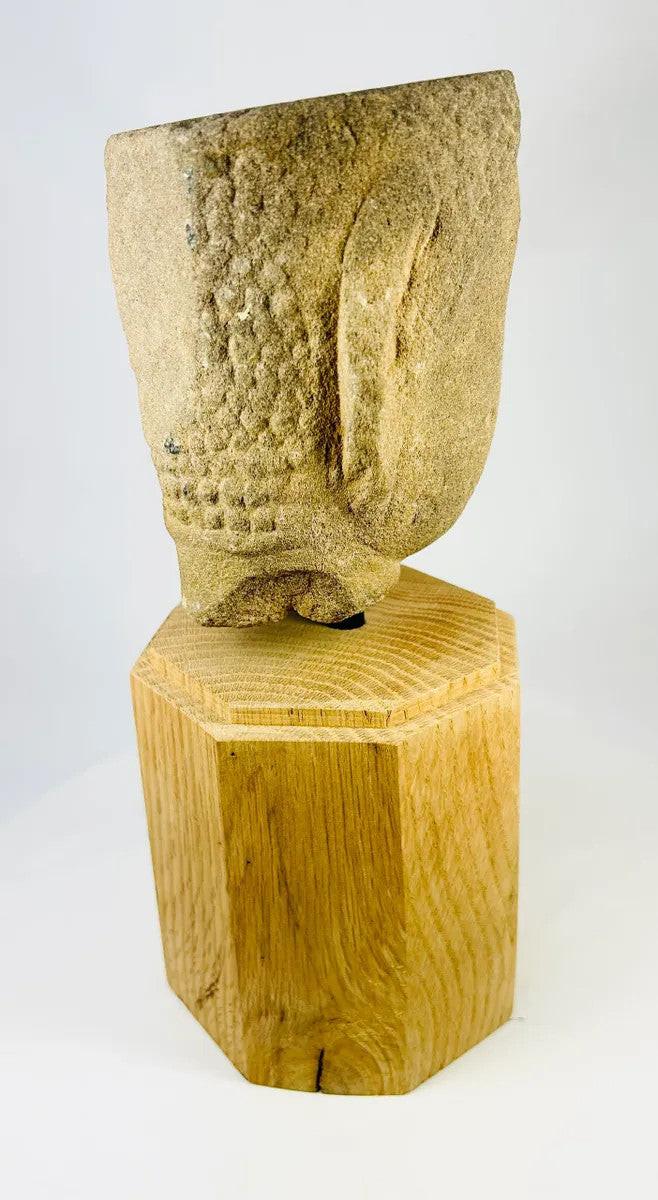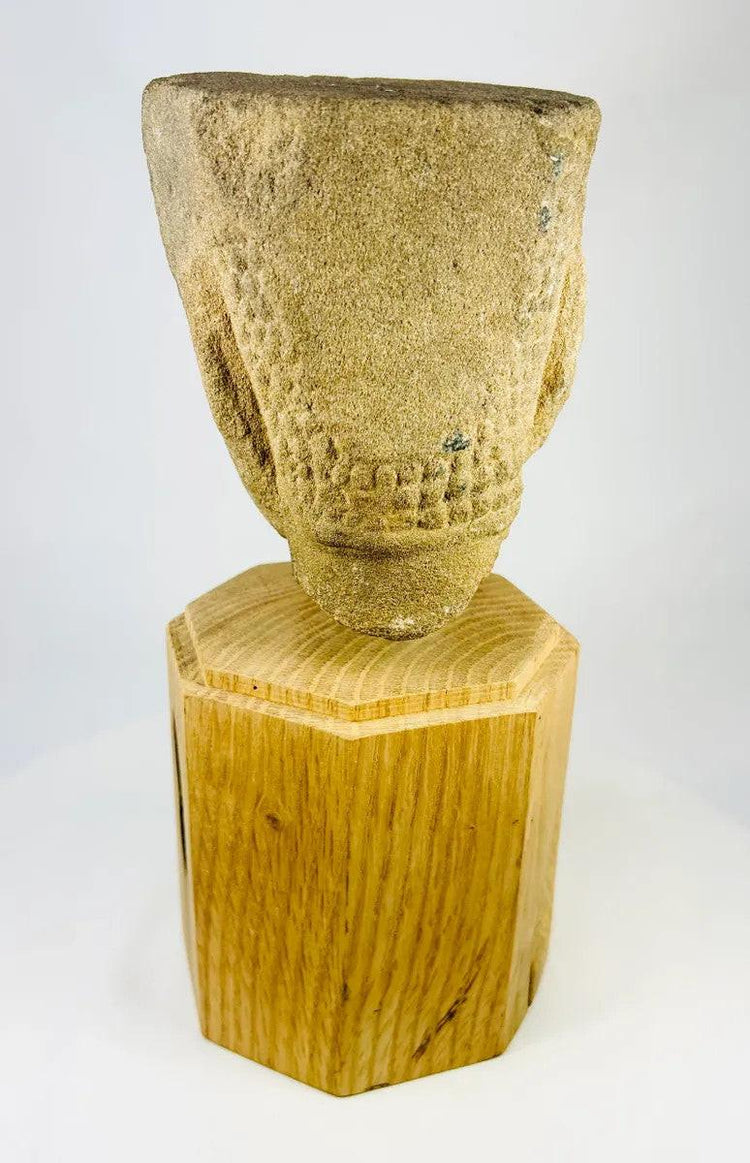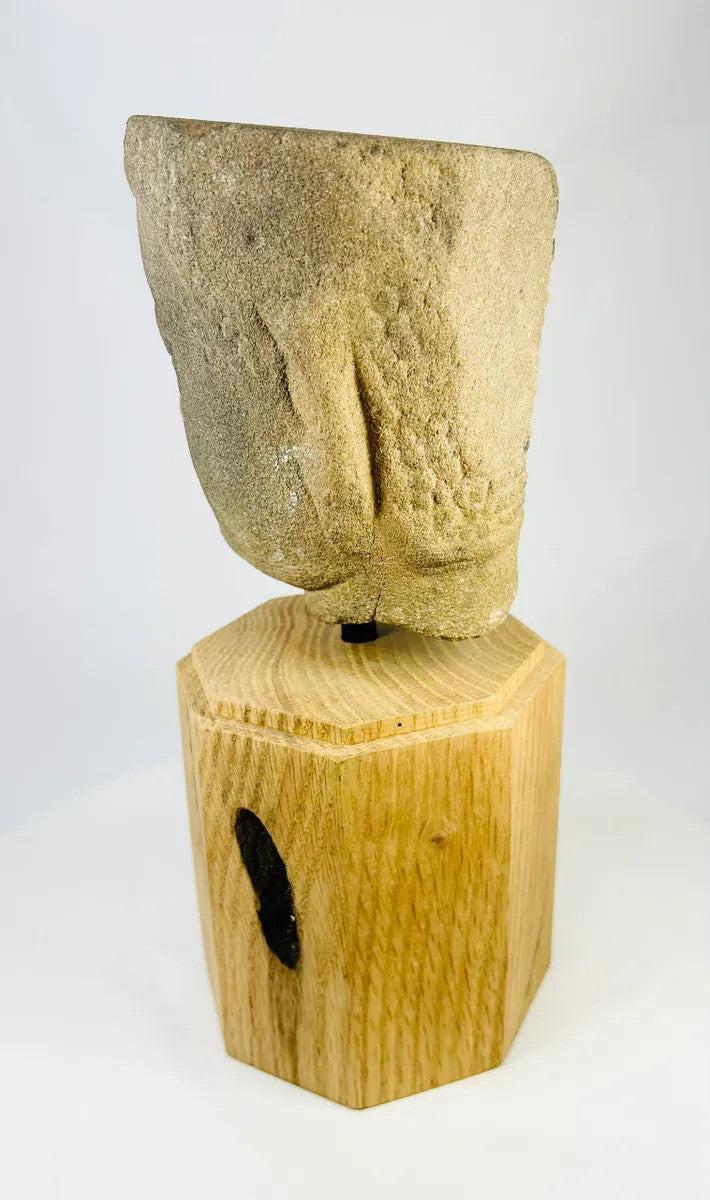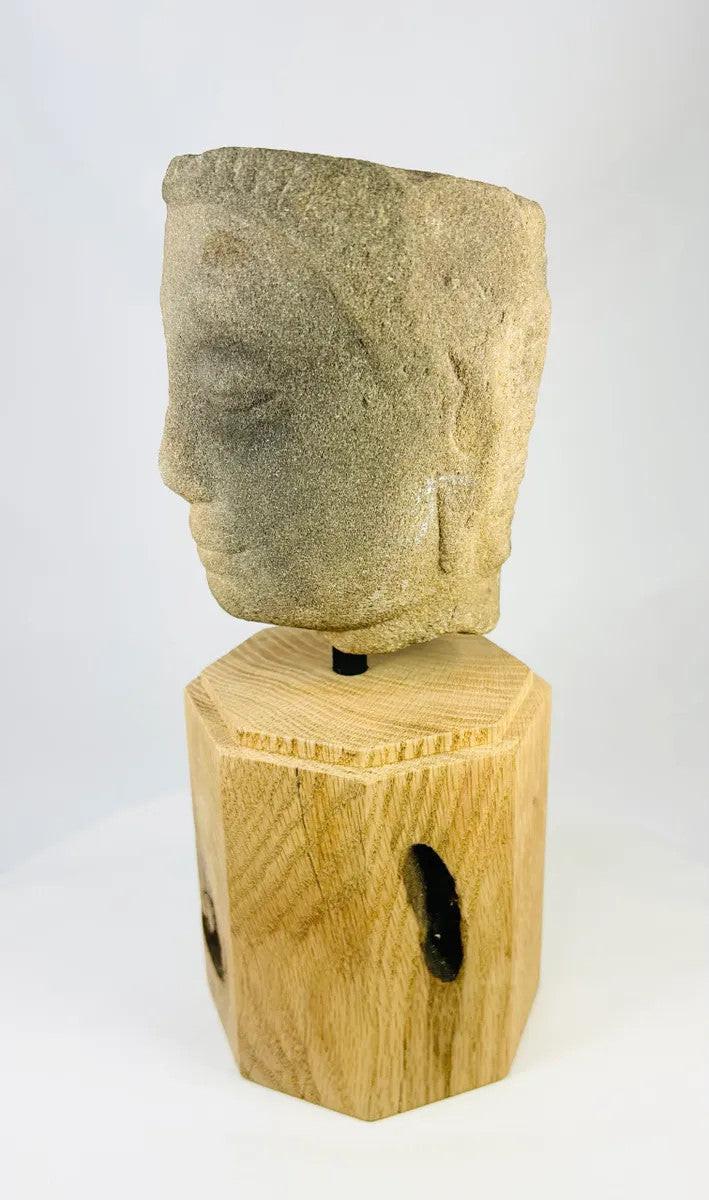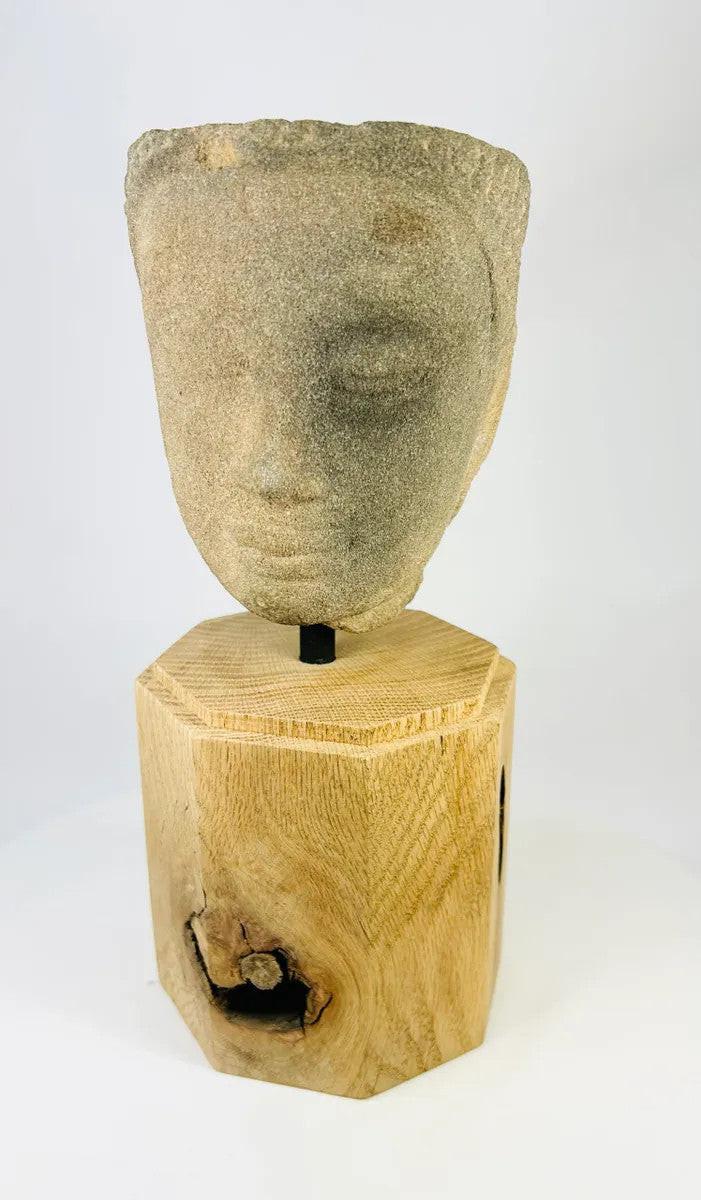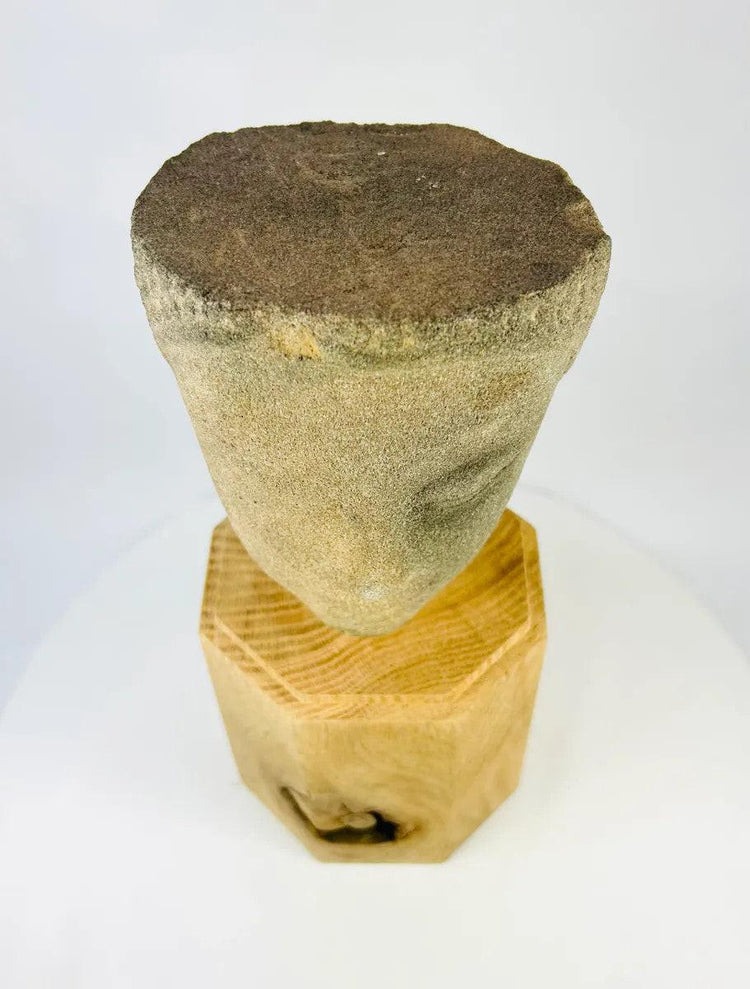Khmer Sandstone Buddha Head Fragment | Angkor Period | Cambodia | 12th Century
Description
More
Less
Historical Context & Origin
Region: Khmer Empire, Cambodia
Material: Sandstone
Period: 12th Century (Angkor Period)
Description
A finely carved sandstone head, likely representing a deity or Buddha from the Khmer Empire during the Angkor period. The serene facial expression, with softly curved lips, downcast eyes, and harmonious proportions, reflects the artistic refinement and spiritual depth of Angkorian sculpture. Originally part of a larger statue enshrined in a temple, the head would have served both devotional and architectural purposes within the sacred complexes of Angkor.
Features
- Carved from fine sandstone typical of Khmer temple statuary
- Serene facial expression with balanced proportions and meditative calm
- Stylized dotted hair pattern still visible in places
- Mounted on a custom wooden display base for stability and presentation
- Exemplifies the refined aesthetics of Khmer religious art
Cultural Significance
Khmer sculpture from the Angkor period represents one of the pinnacles of Southeast Asian art. Temple statuary such as this was considered a living embodiment of divine presence, installed in sacred spaces like Angkor Wat and Bayon. The blending of Buddhist and Hindu elements in Khmer art reflects the dynamic spiritual environment of the 12th century, where monumental artistry met devotional purpose.
Condition
Fragmentary, with the head separated from its original body. Surface weathering, minor abrasions, and chipping consistent with centuries of burial and exposure. Despite these losses, the features remain intact and clearly defined, preserving its spiritual gravitas and historical resonance.
Dimensions (approximate)
Height: 11.5 in
Age
Circa 12th Century CE, Angkor Period
Learn More
Read More About: The Statuary of The Angkor Period
View a Similar Sandstone Fragment From Our Collection: Khmer Empire Devotional Fragment 12th Century
Description
Historical Context & Origin
Region: Khmer Empire, Cambodia
Material: Sandstone
Period: 12th Century (Angkor Period)
Description
A finely carved sandstone head, likely representing a deity or Buddha from the Khmer Empire during the Angkor period. The serene facial expression, with softly curved lips, downcast eyes, and harmonious proportions, reflects the artistic refinement and spiritual depth of Angkorian sculpture. Originally part of a larger statue enshrined in a temple, the head would have served both devotional and architectural purposes within the sacred complexes of Angkor.
Features
- Carved from fine sandstone typical of Khmer temple statuary
- Serene facial expression with balanced proportions and meditative calm
- Stylized dotted hair pattern still visible in places
- Mounted on a custom wooden display base for stability and presentation
- Exemplifies the refined aesthetics of Khmer religious art
Cultural Significance
Khmer sculpture from the Angkor period represents one of the pinnacles of Southeast Asian art. Temple statuary such as this was considered a living embodiment of divine presence, installed in sacred spaces like Angkor Wat and Bayon. The blending of Buddhist and Hindu elements in Khmer art reflects the dynamic spiritual environment of the 12th century, where monumental artistry met devotional purpose.
Condition
Fragmentary, with the head separated from its original body. Surface weathering, minor abrasions, and chipping consistent with centuries of burial and exposure. Despite these losses, the features remain intact and clearly defined, preserving its spiritual gravitas and historical resonance.
Dimensions (approximate)
Height: 11.5 in
Age
Circa 12th Century CE, Angkor Period
Learn More
Read More About: The Statuary of The Angkor Period
View a Similar Sandstone Fragment From Our Collection: Khmer Empire Devotional Fragment 12th Century
You May Also Like






























